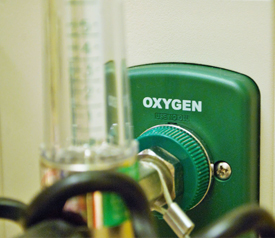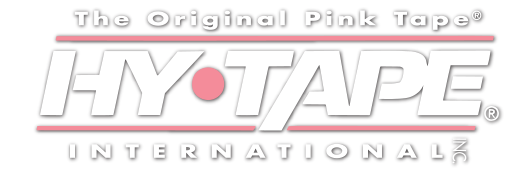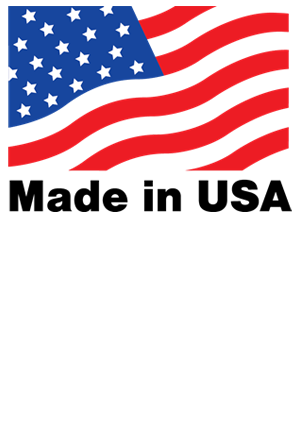
Wounds are often starved of the oxygen they need to heal properly. While several topical wound oxygen devices are available, each needs a bit of help to be of practical use in the real world. We review topical wound oxygen therapy approaches and provide some practical tips to help them be more effective.
Most wounds need oxygen to heal properly
Wound healing requires the coordinated efforts of many different cells and processes. Immune system cells must move to the wound to fight off and prevent infection. New blood vessels, skin cells, muscles cells, and connective tissue must form to close a healing wound. All of these processes depend on oxygen.1 Oxygen radicals, made from oxygen itself, help kill bacteria and other pathogens. In short, wounds need oxygen to heal quickly and cleanly.
Some wounds are starved of oxygen
Healthy skin and tissue are never too far away from the body’s blood supply. Virtually every cell in the body is no more than 100 micrometers from blood vessel2, about the width of a human hair. However, things are different in a wound. By definition, the anatomy is abnormal—some injury or disease process has caused the skin and underlying tissues to change. Because the tissue is disrupted, not all areas of the wound receive a steady stream of blood. Consequently, the wound does not always have the oxygen and nutrients the cells of the wound-healing process need. Bacteria in the wound make things worse. They need oxygen, too, and steal it away from immune system and tissue-rebuilding cells.1 People who have poor blood flow to the extremities even under normal circumstances, e.g., individuals with peripheral arterial disease, often have too little oxygen and nutrient supply in wounds, and thus, poor wound healing.
Delivering just the right amount of oxygen to wounds
Not surprisingly, researchers have determined that providing additional oxygen to wounds can help them heal more quickly and effectively.1,3,4 The right balance of oxygen in the wound is essential. Tissue that is severely hypoxic (deprived of oxygen) will not heal and tissue will die. At the other extreme, hyperoxia (too much oxygen) in the wound can cause programmed cell death, cell cycle arrest, and excess reactive oxygen species.3 In other words, too much oxygen creates an environment that is toxic to new cell and tissue growth. Thus, the topical oxygen delivery system and its application matter.
Hyperbaric oxygen treatment is not for everyone
There are several ways to increase the amount of oxygen in wounds.5 One approach is through hyperbaric oxygen treatment. In hyperbaric oxygen treatment, a patient sits in a pressurized tank and breathes a higher-than-normal pressure of oxygen. This device, which is best-known as a treatment for “The Bends,” can increase the amount of oxygen in the bloodstream. In turn, the amount of oxygen that reaches wounds increases. Unfortunately, only a limited number of medical centers in the country provide hyperbaric oxygen treatment, and multiple treatments lasting several hours each are needed.
Using topical wound oxygen therapy
A more practical approach to delivering oxygen to healing wounds is by administering it directly with topical wound oxygen therapy.4,5 Topical wound oxygen therapy can be administered in several ways.5 Specialized oxygen delivery devices (e.g., EpiFLO, Natrox) deliver a continuous flow of oxygen directly to the wound. Topical dressings contain dissolved oxygen (e.g., OxygeneSys) that is released into the wound bed. Other systems (e.g., two2, TO2) wrap the limb in a bag or similar chamber and provide a constant flow of oxygen. None of these systems are ideal but can be adapted for best performance. For example, topical wound oxygen therapy devices often do not contain a dressing as part of the device, dissolved oxygen dressings may not adequately adhere to wounds, and oxygen tent devices must maintain an adequate seal.
Making topical wound oxygen therapy practical
Sadly, manufacturers provide little guidance as to which dressings and adhesives should be used with topical wound oxygen therapy devices. The dressing has to be tight enough to prevent oxygen from leaking around the dressing but also not such that too much pressure is created in the wound bed. If the wound is under too much pressure, it will compress delicate blood vessels and make blood flow to the wound even worse. All wounds, including those treated with topical oxygen therapy, must be inspected frequently for signs of healing or infection. Adhesives should hold firm, but be gentle on skin to allow for frequent wound checks and dressing changes.
Integrating Hy-Tape into topical wound oxygen therapy
Hy-Tape is a waterproof, occlusive medical tape that can be used to secure topical wound oxygen therapy devices. It holds tight, but releases cleanly and gently, even from delicate skin. When used to reinforce an occlusive or semi-occlusive dressing, Hy-Tape can create a seal to secure the dressing and retain oxygen within the wound bed. Note, some oxygen delivery devices require contact with air to chemically produce oxygen. In these cases, a semi-occlusive or non-occlusive dressing should be used, with the borders of the dressing reinforced with occlusive Hy-Tape.
Hy-Tape can also be used to secure and reinforce dissolved oxygen dressings. These dressings are designed to provide oxygen, not adhere to wounds in all conditions. In these cases, Hy-Tape provides additional waterproof securement for the dressing, allowing it to maintain contact with the wound bed, which is critical for their effect.
Lastly, bag and chamber wound oxygen solutions require tight seals. While these systems do contain a form of medical tape, it can be harsh on skin. Hy-Tape provides a gentler, safer alternative that can still maintain an air-tight seal around the topical wound oxygen therapy device.
More on creating a waterproof and airtight seal.
- Negative Pressure Wound Therapy: A Focus on Diabetic Foot Wounds
- Mitigating Skin Maceration & Adhesive Damage to Peri-Wound
- Exudative Wound Management & The Importance of Medical Tape
References
1. Sen CK. Wound healing essentials: let there be oxygen. Wound Repair Regen. 2009;17(1):1-18. 10.1111/j.1524-475X.2008.00436.x
2. Sarveswaran K, Kurz V, Dong Z, Tanaka T, Penny S, Timp G. Synthetic Capillaries to Control Microscopic Blood Flow. Sci Rep. 2016;6(1):21885. 10.1038/srep21885
3. Castilla DM, Liu ZJ, Velazquez OC. Oxygen: Implications for Wound Healing. Adv Wound Care (New Rochelle). 2012;1(6):225-230. 10.1089/wound.2011.0319
4. Greif R, Akca O, Horn EP, Kurz A, Sessler DI, Outcomes Research G. Supplemental perioperative oxygen to reduce the incidence of surgical-wound infection. N Engl J Med. 2000;342(3):161-167. 10.1056/NEJM200001203420303
5. Dissemond J, Kroger K, Storck M, Risse A, Engels P. Topical oxygen wound therapies for chronic wounds: a review. J Wound Care. 2015;24(2):53-54, 56-60, 62-53. 10.12968/jowc.2015.24.2.53

